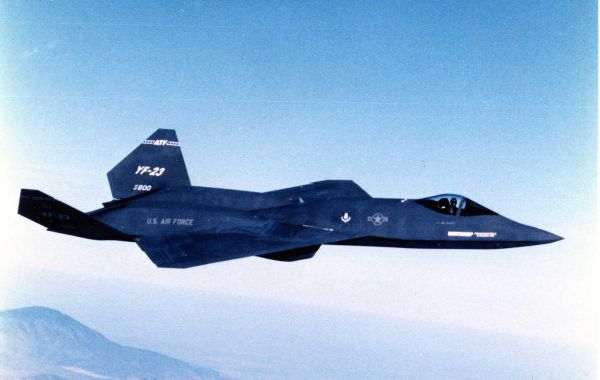Discover the history and technical features of the YF-23, the stealth fighter jet that competed against the F-22 for the title of America’s next fighter plane. Learn about its design, performance, and why it ultimately lost to the F-22.
The Northrop YF-23 was unofficially named the Black Widow II for the stealth configurations it employed in its contest against the Lockheed YF-22A, in an epic battle of engineering prowess that would determine the US Air Force’s next covert fighter jet.
Although ultimately unsuccessful, the YF-23A was still an incredibly impressive piece of technology, and was in some ways better than the YF-22A, now better known as the F-22 Raptor.
The YF-23
The YF-23A, manned by a single operator, had a height of 13 feet and 11 inches, a length of 67 feet and 5 inches, and a pair of diamond-shaped wings that were swept back at 40 degrees, with a wingspan of 43 feet and 7 inches and a wing area of 900 square feet.
With an altitude ceiling of 65,000 feet and a combat takeoff weight of 62,000 pounds, it was powered by two Pratt Whitney YF119-PW-100 engines or two General Electric YF120-GE-100 after-burning turbofans, which gave it a maximum speed of Mach 2.0 and a range of 750 to 800 nautical miles.
In order to save weight and maximize stealth, Northrop opted not to use thrust vectoring, a technique allowing the pilot to manipulate thrust from the engine to perform tight maneuvers.
At the upper fuselage, the YF-23A featured a mid-air refueling array, and at the rear fuselage, it was fitted with two V-tails angled at 50 degrees which hid fumes from the engine exhaust.
Fully loaded, it was armed with four AIM-9 Sidewinder missiles deposited inside internal bays at the sides of the engine ducts as well as 4 AIM-120 AMRAAM missiles carried inside an additional internal bay located beneath the air intakes.
In an effort to reduce radar detection, all of the armaments remained inside of the plane, and when released the projectile would be extended into the air stream and the bay doors would immediately shut in order to minimize its radar signature.
Finally, to save money, the manufacturers used components from existing planes, fitting the YF-23A with modified F-18 landing gears as well as a nose and a cockpit salvaged from an F-15.
Click here to know more about YF 23.








